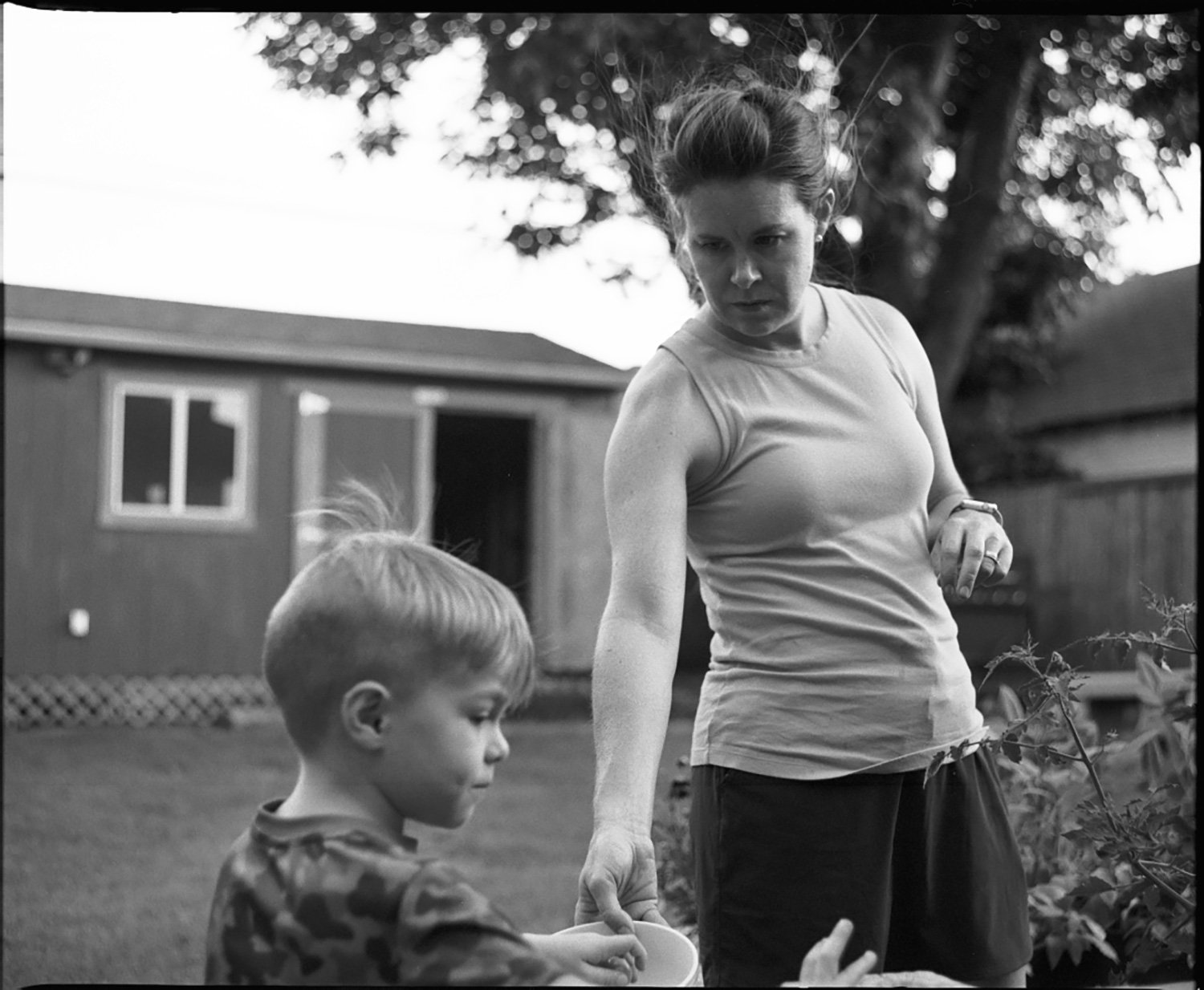Freakin' black and white film photography has been good for soul lately. Not caring about the color temperature around me matching the film in my camera has been a nice change, plus I'm also diggin' the fact that a roll of Ilford HP5+ is nearly half what I was spending on Portra 400.
My first legit experiences behind a camera go back to high school me. Back then I spent most of my time in the band room and/or trying to keep up with my honors classes, but then there's that one photography class I took that ended up being the most related to what I do for a living. Not sure where I got the camera, but we shot our assignments on 35mm black and white (B&W) film that we later developed and printed in the school's darkroom.
The fact I really don't know if the images I'm trying to make will actually turn out or not is pretty great. My 1970's era Mamiya RB67 Pro-S smells like an old car and doesn't have a light meter. Sometimes I'll do test shots with my DSLR to dial in shutter and iris settings. Sometimes I'll lean into my handheld Sekonic light meter to do the thing, but then again shooting film is all for naught if you screw up the developing part. I've got a growing binder of color and B&W negatives I've shot since getting my film camera and can honestly say there's only a handful of images in there I'm proud of. In our world of instant gratification, forced patience is a good thing.
Back in May I was in New York to film an abortion rights protest and came home with five rolls of Ilford HP5+, some powdered Kodak D76 developer and fixer, plus a small bottle of concentrated Kodak liquid stop bath. I'd had a good experience with powdered C41 chemistry before and knew the powdered form would have a longer shelf life. Plus I didn't want to chance big bottles of liquid spilling out and destroying the other gear and actual livelihood packed away in my checked gear cases while in transit.
For my C41 film processing, I already had a Paterson developing tank, dark bag, and some other misc. bits. I keep my color chemicals in one liter dark amber glass bottles, but opted instead to get those accordion style plastic bottles for my B&W goodies. So far I'm more impressed with those plastic bottles seeing as how they're less likely shatter and they can squish down to keep out excess air (and oxidation) to help extend the chemistry's shelf life.
Most of the internet told me not to try and break up the dry chemistry batches into smaller quantities, but they're not the boss of me. A couple other rebels let me in on their secrets and I too broke up my gallon batches of D76 developer and fixer. Make sure you're prepping your chemistry in a well ventilated area so you're not losing a lung like this hero. Be smart too and wear rubber gloves, a mask, and avoid doing this nonsense in the same place where you prep food.
There's tons of B&W developing tutorials online. For some reason they all seem to not get along or agree like those nice hipster kids doing their thing with C41 color developing. I kinda mixed and matched what I could find considering the film stock and the chemistry combination I'm using.
DEVELOPING B&W FILM
ALL CHEMISTRY NEEDS TO BE AT SIMILAR TEMPS
PRE-SOAK
Agitate for :60
Dump out
Rinse
Dump out
DEVELOP (stock)
Agitate first :30
Invert 4x every :30 & tap out bubbles
Developer back to storage container for reuse
STOP BATH
Agitate for :60
Stop bath back to storage container for reuse
FIXER
Agitate first :30
Agitate & invert every :30 for 5 mins & tap out bubbles
Fixer back to storage container for reuse
RINSE
Rinse film for 5 mins with room temp water
DEVELOP TIMES (STOCK)
Ilford HP5+ & Kodak D76
| ISO | TIME | TEMP |
|---|---|---|
| 400 | 5:05 | 75° F |
| 800 | 7:07 | 75° F |
| 1600 | 9:29 | 75° F |
The one thing most agreed on was using The Massive Dev Chart website to work out and match up developing times and temperatures. According to the website, you're supposed to process Ilford HP5+ at 68°F with your Kodak D76. But it's summertime here and during these months our house never gets below mid-70°s. Again, thank goodness for Massive Dev Chart because it's got a conversion option to help do what you need done. I'm using my developer at stock vs. diluting it – at least at this point. I'd shot a couple of my rolls at the box speed 400 ISO, then the others pushed to 1600 ISO. Again, Massive Dev Chart came in clutch with the help in developing.
Another thing I found out in doing my B&W goodness is that my scanner is jacked. I've got an Epson V600 that I've been using for a bit, but turns out I've also got the magenta line curse like a ton of other people on the internet. For the longest time I thought my film back was scratching my negatives. But no. It's thanks to supposedly dirty sensors that this dude on YouTube was able to fix. I did the thing and cleaned the sensors on my V600, but it didn't help like it did the other film bros lurking in the video's comment section. Looks like I'll have to reach out to Epson and work out warranty stuff.

















